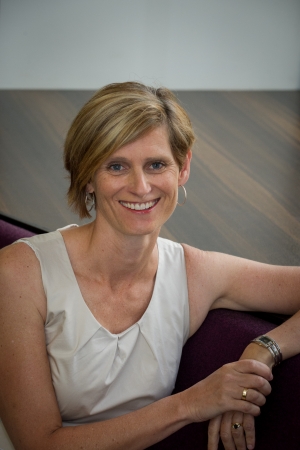Discovery signals malaria downfall
Research news
Associate Professor Tania de Koning-Ward and her team of four researchers have made a breakthrough in the scientific understanding of malaria that could lead to its potential eradication within two decades.
Malaria is one of the world’s most deadly diseases, with 300 to 500 million people affected annually and over 627,000 people dying each year, mostly children under the age of five.
It has been estimated that one child dies every minute from the disease in Africa.
With funding from the NHMRC and Deakin University, de Koning-Ward, who is an Associate Professor of Molecular Parasitology, and her team from Deakin’s School of Medicine have been working with researchers from the Burnet Institute on this project for the past five years. Their research was published in “Nature” on the 17th of July.
Deakin’s Deputy Vice-Chancellor (Research) Professor Lee Astheimer, said the breakthrough was an outstanding achievement for Associate Professor de Koning-Ward and her team, and their colleagues at the Burnet Institute.
“This finding has tremendous implications for global health and reflects the outstanding calibre of all the researchers involved. It epitomises our goal to have real impacts on individuals and communities through translational research.”
The scientists have identified a single gateway in the membrane between the malaria parasite and the host animal’s red blood cell that allows the parasite to send hundreds of its own proteins across the membrane and into the blood cells. Once released, the proteins play key roles in nutrient acquisition to aid survival and parasite virulence.
“Now that we know that there is only one gateway through which all these parasite proteins, with diverse functions, can enter the host red blood cell, we can develop drugs to block the gateway, which will kill the parasite and stop its spread,” said Associate Professor de Koning-Ward.
“Not only can we block the gateway in the red blood cell stages, but we can also target the parasite at all of its life stages, including the parasite form that transmits to mosquitos, as the proteins that make up the gateway are also present in these other stages.”
The moment of the breakthrough - and its significance for world health - was not lost on Professor de Koning-Ward or her colleagues.
“After five years of working on this project, in December last year, we knew we were getting close. Then one day I looked down the microscope and I knew we had found the answer. We then texted a photo of the microscope image to our collaborators in Melbourne, saying ‘we’ve finally got it.’
“It was the most exciting moment of my career. We ditched the Faculty Christmas Party – (they were playing mini-golf) - and my group returned to the lab. We were so excited about the implications of this discovery.”
Associate Professor de Koning-Ward explained that, until now, malaria drugs have generally only targeted single pathways in the life cycle. In contrast, this new discovery will block up to 350 different proteins with very diverse functions, making it very difficult for the parasite to develop drug resistance.
“This discovery comes at a critical time,” she said. “The world is down to one last effective anti-malarial drug, which must be used in combination with other drugs – and resistance to that drug has begun to occur in parts of Asia.
“The complex that we have discovered is expressed at multiple life stages of the parasite, from the first bite of the mosquito, when it injects sporozoites into the liver and reproduces by the tens of thousands, to the full-blown blood stage of the life cycle that is responsible for the array of malaria symptoms, to the stage that is responsible for transmission of the parasite back to mosquitoes.”
Associate Professor de Koning-Ward said that, while not a chemist, she hopes to remain involved in some way with the next phase of the project - developing the drugs - and she expects that, with clinical trials, it could be 10 to 15 years before the new drug is available.
Share this story
 Associate Professor Tania de Koning-Ward.
Associate Professor Tania de Koning-Ward.
